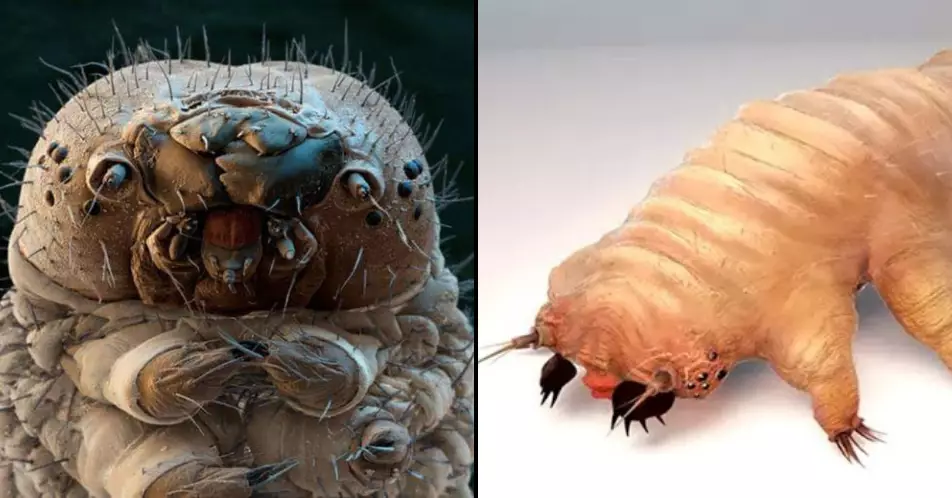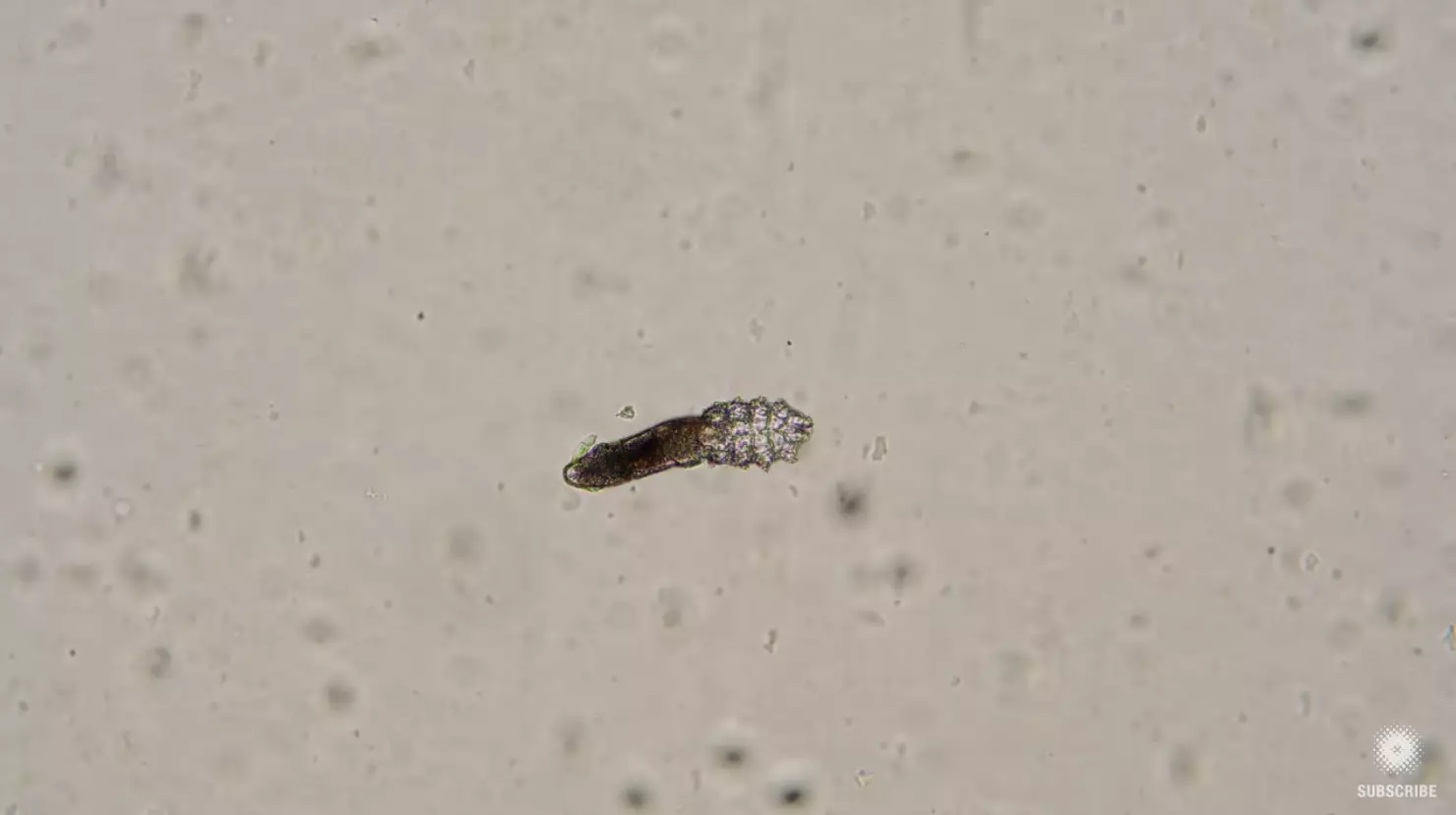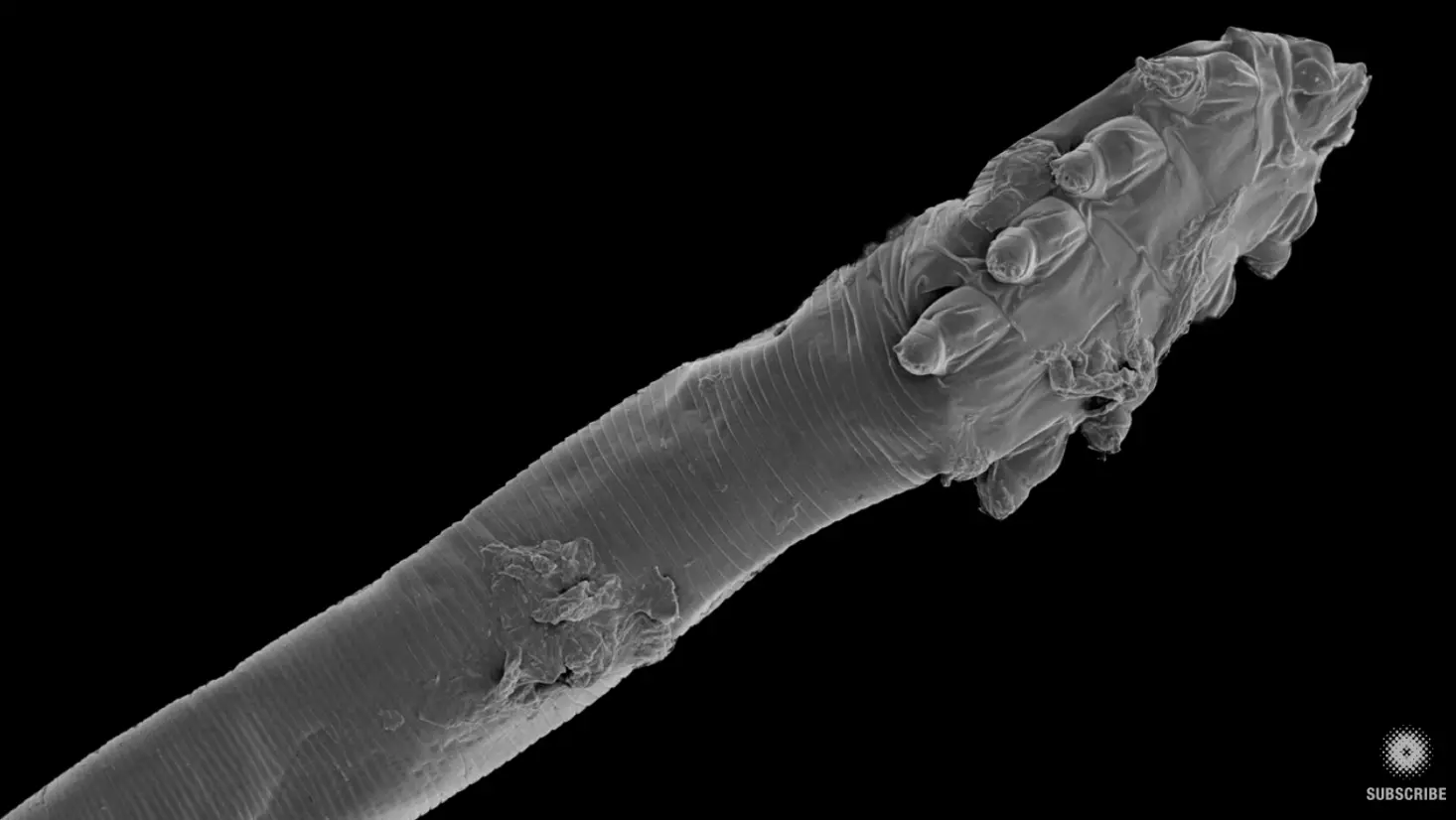
Your face is covered in loads of microscopic arachnids that live in your hair follicles and glands.
The Demodex arachnids were present in 100 percent of adults tested in a 2014 study, that found traces of DNA on every single person it looked at.
The creatures are about 0.3 millimetres in length, the perfect size to pack into your pores.
Advert
To put that into context, if you lined up five adult face mites end to end, they would just about stretch across an average pin head.

There is roughly one D. folliculorum mite in each of your hair follicles. Seeing as the human body has about 5 million hair follicles - there is a lot of scope for mites.
Another kind of tiny creature, known in parasite circles as D. brevis, can squeeze into sebaceous glands a few at a time.
Advert
The tiny creatures eat sebum - that greasy oil that your skin makes naturally. It's produced in glands, then empties into hair follicles, much to the face mites' delight.
This is why the greasiest bits of your body, like round your eyes, nose and mouth, are likely to have more mites.
They live for about two to three weeks, crawling out on to your skin's surface to mate, and then lay their eggs.
There's a nice thought to fall asleep to.
Advert
Because they're in your pores, it's impossible to get them off by washing.
Although they're mainly harmless, those with suppressed immune systems can have an overpopulation, which can lead to skin problems. There are also links with skin conditions such as acne and rosacea.
Michelle Trautwein, an entomologist at the California Academy of Sciences in San Francisco who has studied Demodex, says they look like 'stubby little worms'.

Advert
In an interview with NPR, Michelle said: "They tell a story of your own ancestry and also a story of more ancient human history and migration.
"I actually put glue on a glass microscope slide and stick it onto a person's forehead. Then I slowly peel it off. I look under a microscope for mites that are stuck in the follicles that stick up from the thin layer of skin that got peeled off.
"It can be pretty addictive and exciting. It's sort of a meditative process of looking through this microforest of follicles and hairs and looking for just the right potential movement or shape."
She explained that to test those in her study, her team scraped a spoon across people's faces.
Advert
Trautwein added: "No one is thrilled at the initial notion that they have arachnids on their face. But people are often curious - even in their revulsion."
Featured Image Credit: YouTube/KQED